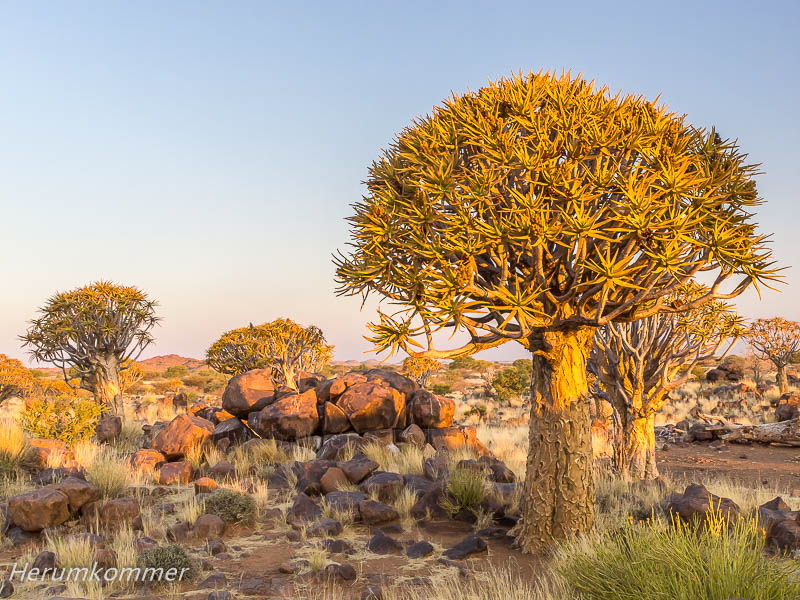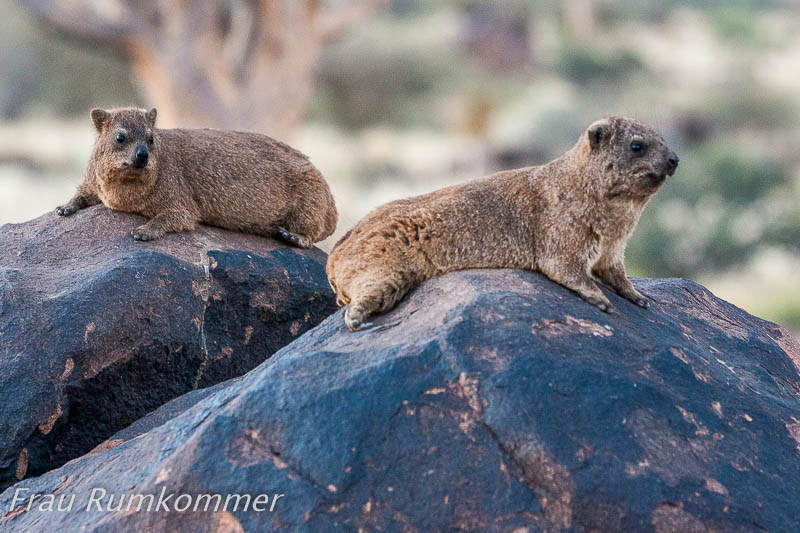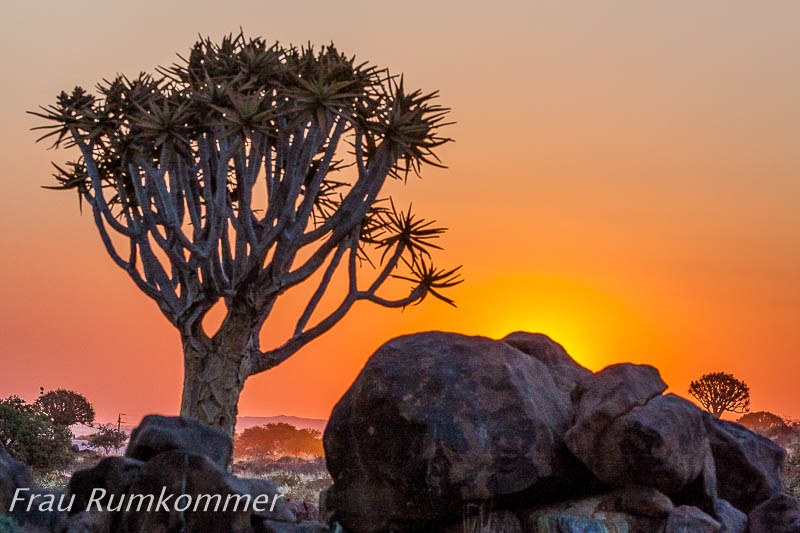Köcherbaumwald

Direkt beim Quivertree Forest Restcamp liegt der Köcherbaumwald (Quivertree Forest). Der Köcherbaum ist eine Aloe in der Gestalt eines Baums, bis zu neun Meter hoch, mit einem Stammdurchmesser bis zu einem Meter an der Basis. Seine ledrige Rinde ist rissig, der Stamm wirkt dadurch schuppig. Stamm und Äste sind innen weich und faserig bis schwammig. Darin speichert die Pflanze Wasser. Die so genannten Buschmänner höhlen die Äste aus und benutzen sie als Köcher für ihre Pfeile, daher der Name.
Hier, nördlich von Keetmanshoop, ist eine Ansammlung von etwa 250 Köcherbäumen, die größten bis zu 300 Jahre alt. Obwohl sie weiter auseinander stehen, als Bäume im Wald, wird dieser Begriff verwendet, während sie meistens vereinzelt wachsen. Mit nachlassendem Tageslicht sehen wir Klippschliefer auf Felsbrocken zwischen den Bäumen.
Quivertree Forest
Directly at the Quivertree Forest Restcamp lies the Quivertree Forest. The quiver tree is an aloe in the shape of a tree, up to nine meters high, with a trunk diameter up to a meter at the base. Its leathery bark is fissured, the trunk is scabby thereby. The trunk and branches are soft and fibrous to spongy inside. The plant stores water in it. The so-called Bushmen hollow out the branches and use them as a quiver for their arrows, hence the name.
Here, north of Keetmanshoop, is a collection of about 250 quiver trees, the largest up to 300 years old. Although they stand farther apart than trees in a forest, this term is used while they mostly grow singly. With daylight diminishing we see Rock dassies on boulders between the trees.




















